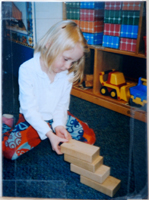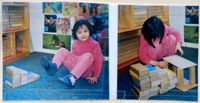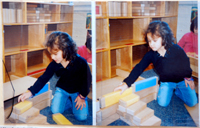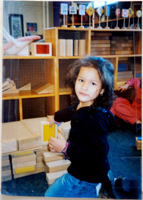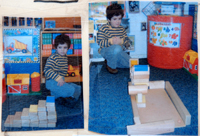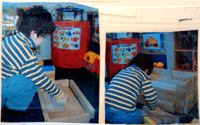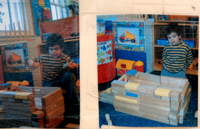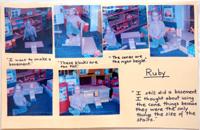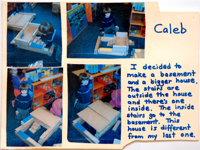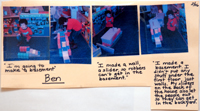Problem Solving
Preschoolers build on the floor when playing in our block area. This activity challenged their sense of spatial relationships. To me, it was fascinating to see that the main challenges that emerged were:
- The placement of the building once the stairs were complete: Does the building go next to the top or bottom stair?
- If the building is built on the floor, how do you get the door and first floor level with the top stair? (A discovery made while figuring out this second challenge was the notion of a basement!)
- What if the stairs are inside the building?
(I should note here that additional private documentation was written regarding the children's problem solving skills, particularly their ability to persist in the face of a challenge and generate and try out multiple solutions.)
Documentation As Building Blocks For New Learning
- The children's second attempts were more elaborate and most of them tried new approaches. Some of the children incorporated multiple ideas presented in the documentation.
- Reviewing the documentation, giving the children a chance to see varied approaches to the activity, was enriching and enhanced creativity and prompted additional problem solving.
- Most of the children took these new ideas and perspectives and made them their own. The documentation served as a teaching tool resulting in thoughtful, more detailed planning and execution.
- The children learned that there was not one "right way" to accomplish this task and that they could learn from one another.


